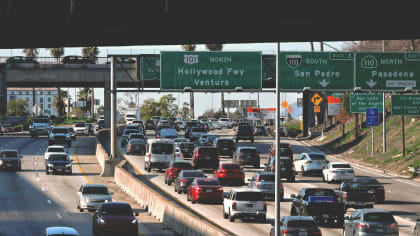NOT JUST HOT AIR
This article is from our archives and has not been updated and integrated with our "new" site yet... Even so, it's still awesome - so keep reading!
Published on Sun, Oct 10, 2004
By: The LACar Editorial Staff
NOT JUST HOT AIR
By JOHN GRAFMAN
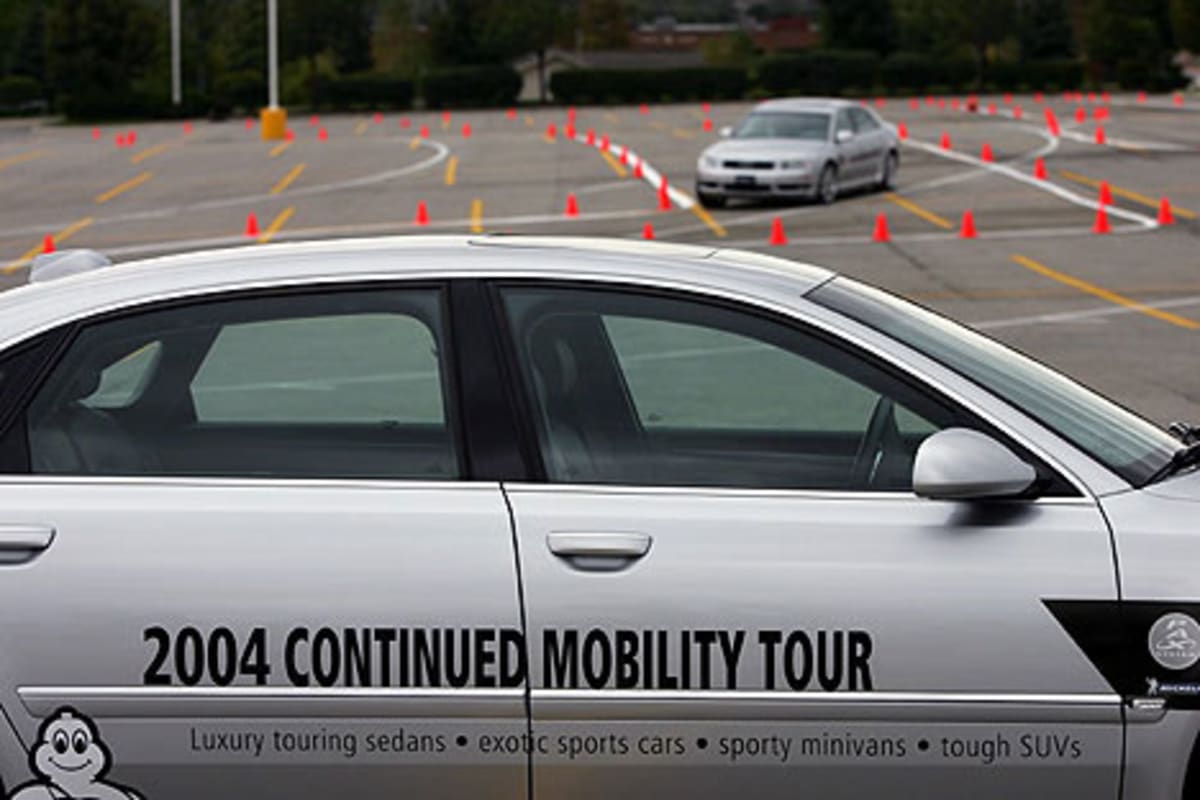
We are now entering the Bizzaro world. Going around the coned course is no problem. Uncertain of both the car and myself, I'm not pushing the Audi A8 so as to keep it within what I consider a wide margin of error. Then the Michelin pro driver takes over. I'm thinking we should be dead by now. In almost any other situation with one tire void of air, pushing the car nearly as hard as one does on four fully inflated tires means something very bad is imminent. However, nothing bad happens. Let me reiterate: We are running through this course like our tail is on fire. I'm thinking this is a pretty neat trick! Every iota of information we engrained in our heads about tires is about to be tossed aside. Our time behind the wheel on city streets and on a coned track in the parking lot of Hollywood Park is accomplished on tires completely absent of air pressure!
We're covering several miles in city driving without even the slightest
mishap. Onlookers take only the slightest notice of us lapping the Hollywood
Park racetrack in both a 2005 Honda Odyssey minivan and a 2004 Ford Explorer.
While it's obvious something is going down due to the Michelin Tire graphics
on the body side, our underlying purpose for this afternoon spin is less noticeable.
The PAX system, a new technology Michelin developed is conceptually simple to
understand, yet it cost millions of dollars to create. The object is to allow
a car, SUV, or truck tire to deflate either slowly or suddenly blow out, and
not affect the driving substantially. This system also allows the car to continue
on for another 125 miles at fifty miles per hour - even being totally deflated.
To lure the general population into this amazing technology, Michelin is pricing
this to its dealers at only around ten percent more than its comparable standard
tires.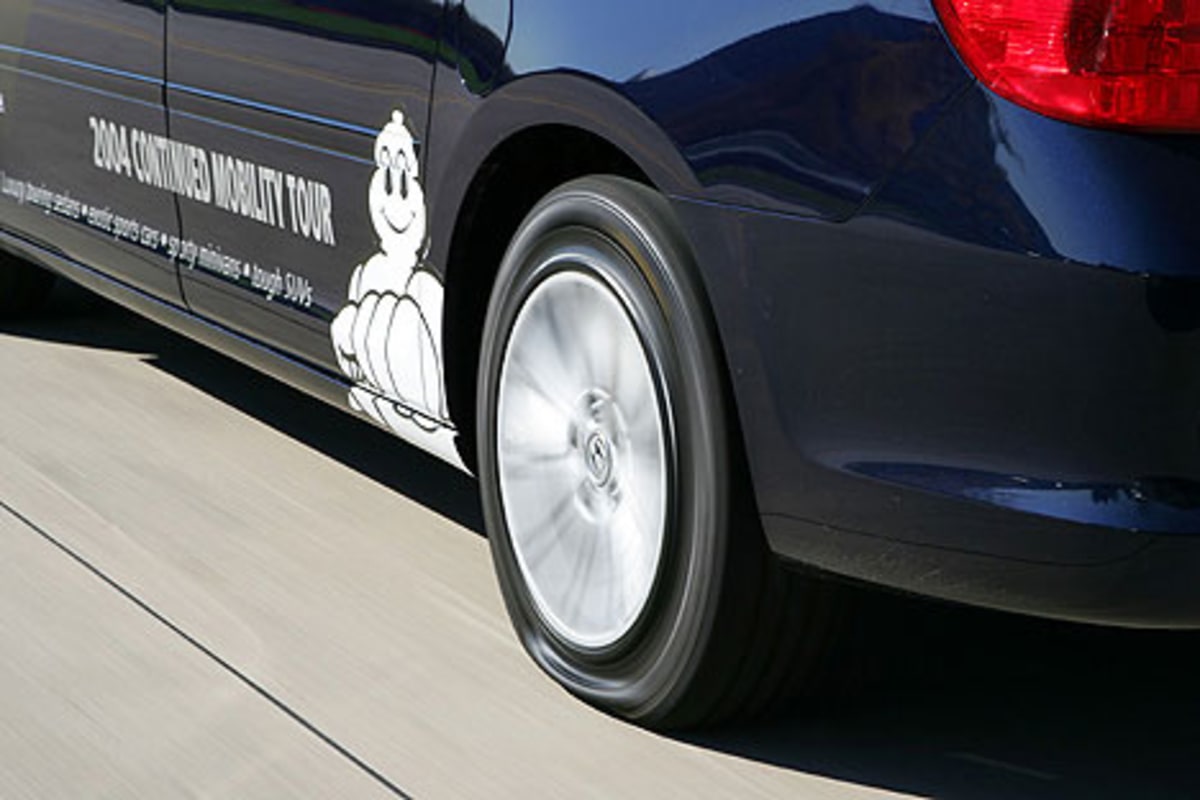
Since when do giant leaps forward happen without some kind of downside? This
is like getting an additional two-hundred horsepower from a motor that also
gets better fuel economy at the same time. This stuff is just not supposed to
happen.
To make sure this seed takes root, the technology is being licensed to many
of the most well-known other tire manufacturers. How do they do it? Imagine,
a new type of rim that helps to keep the tire in place regardless whether air
is inside it or not. Secondly, a big plastic truss is placed around the wheel.
The truss is inside the tire to support the tire itself if there is a lose of
pressure. Lastly, a tire pressure monitor is part of the deal so the driver
is aware that the tire is indeed flat or low on air. 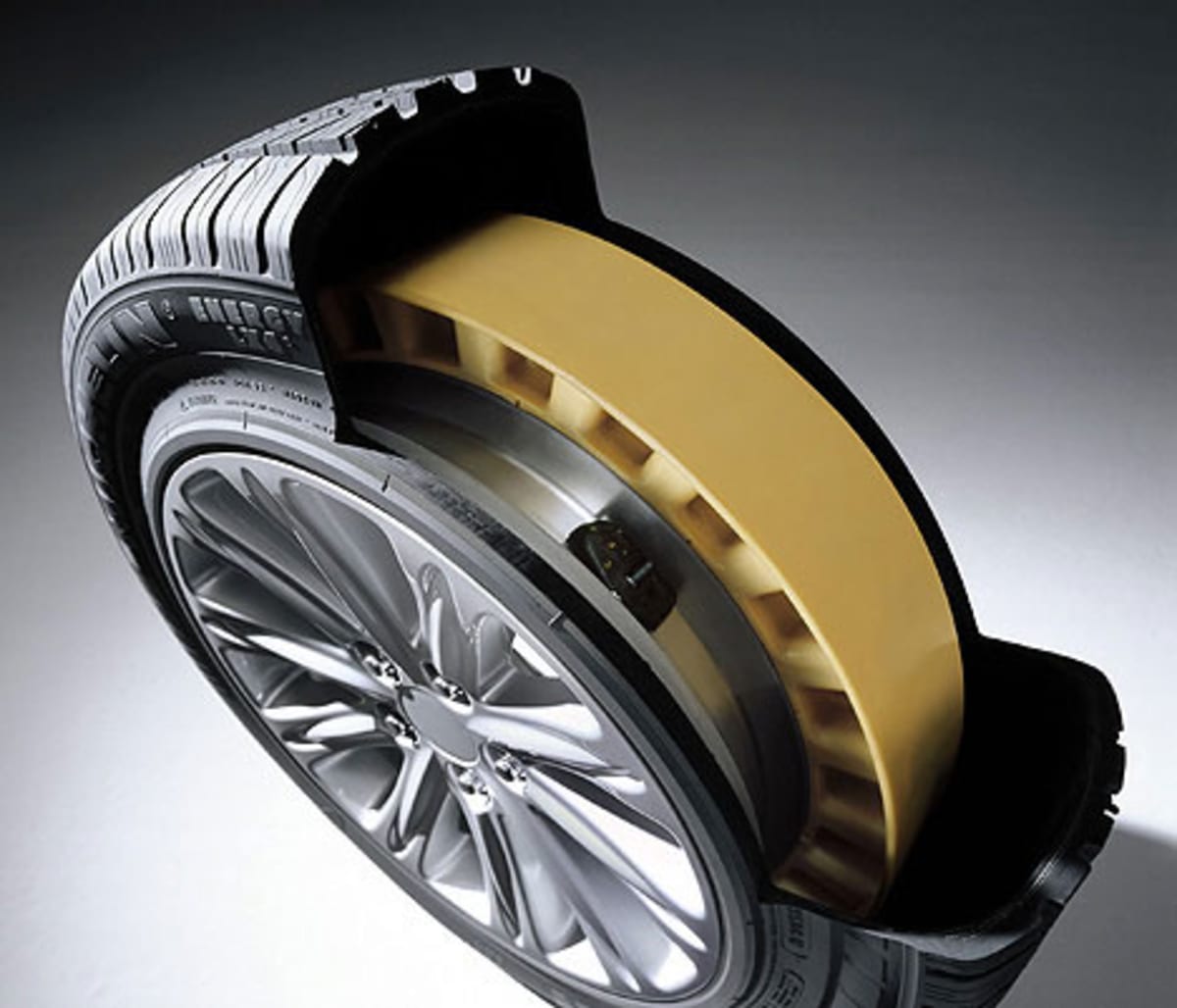
Five hundred plus people in the United States die annually as a result of under
inflated or flat tires and hundreds more are injured. Using this technology,
those numbers should fall into no more than single or double digits. You still
have to account of the human factor ("you know, morons" - Gene
Wilder, Blazing Saddles).
Changing tires when it's inconvenient is going to be a thing of the past.
Being stuck without a spare won't matter. The lack of a required spare
will now accommodate design variations. Any additional cost penalty or pounds
due to the new PAX system is outweighed by elimination of a spare. 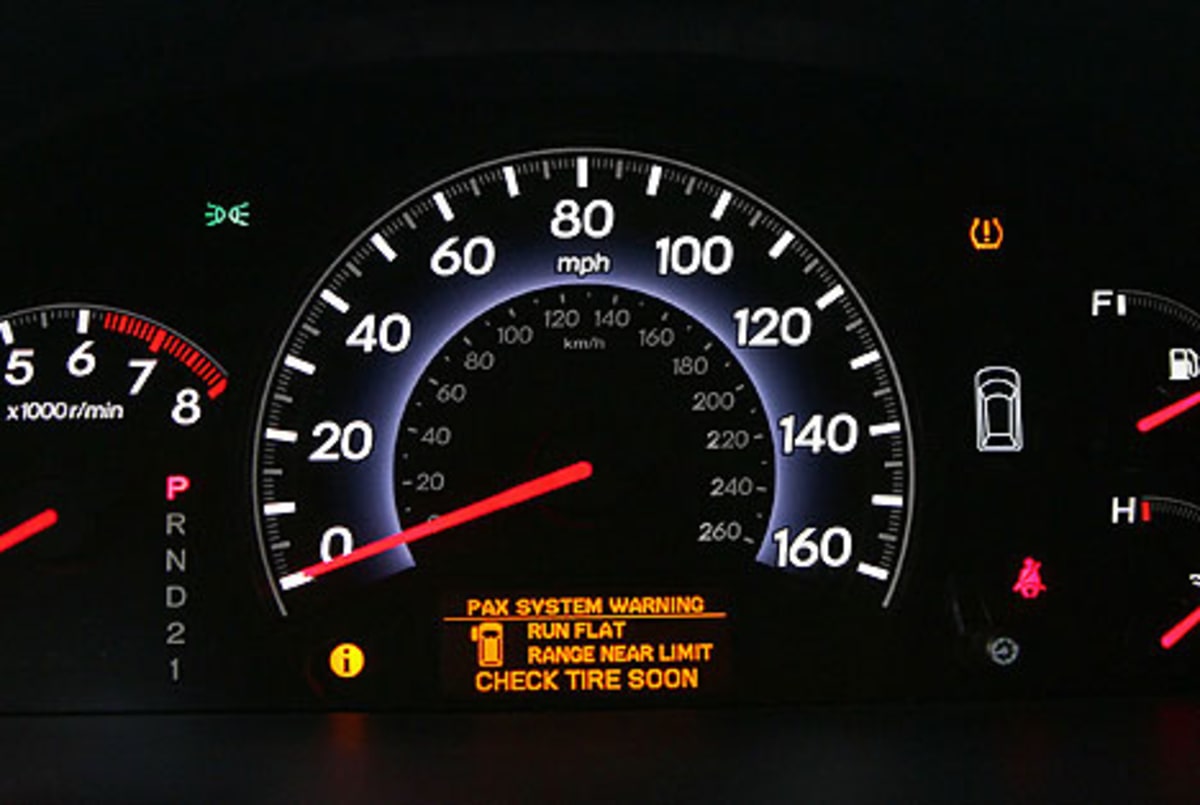
Yes, there are tires on the market currently that can run without air, zero
pressure tires or ZPs as they are known. Unfortunately they require thicker
sidewalls, which support the weight of the car once the tire is deflated. That
means they aren't practical for heavy vehicles such as SUVs, trucks and
vans. Thicker is also stiffer, and that equates to a less comfortable ride.
They can also generate heat due to the thick cross section and all of that additional
rubber cost big bucks over a conventional tire. ZPs are a solution, but not
the best solution.
PAX has a way to go before it is as common as, say, diesel fuel. First, as the
system requires a wheel tire pressure monitor built into the car, don't
expect to just throw a set on your old grocery getter. As a result of the design,
only wheels designed for PAX tires will accommodate them. In a best case scenario,
the manufacturer will develop the entire suspension to make best use of this
system. The short answer is "no, you just can't throw a set on your
car and be good-to-go at this point in time." 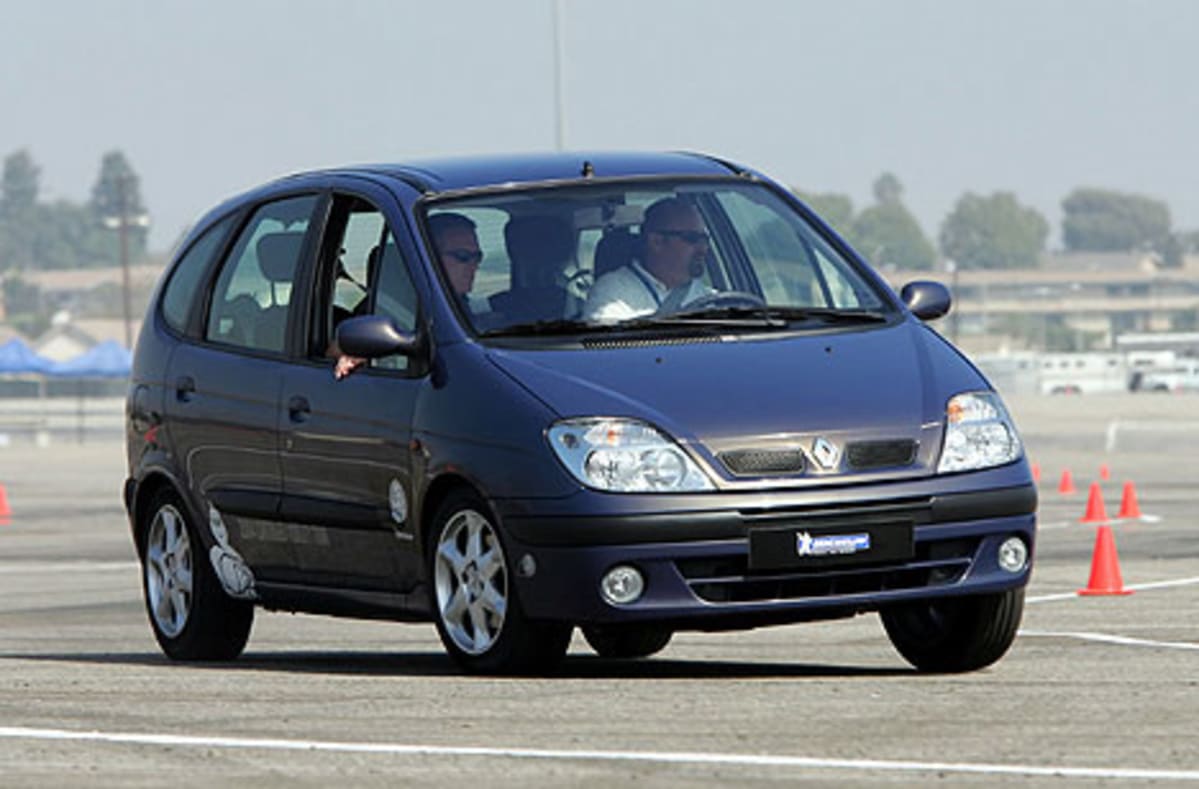
The Honda Odyssey is one of the first cars to offer this system. It's in
good company with Rolls Royce and a few others. No company can deny the advancements
made by Michelin. It shouldn't be too long before all companies offer this
in all of their cars. This is no less an advancement of tire technology than
the radial was over bias ply.
The PAX system is flat-out overwhelming (pun intended). The money spent on developing
this will be long forgotten about in a few years. Success has a way of doing
that.
The world is no longer the same and new rules apply from here on out. Now, if
we can just get that cold fusion concept to work right!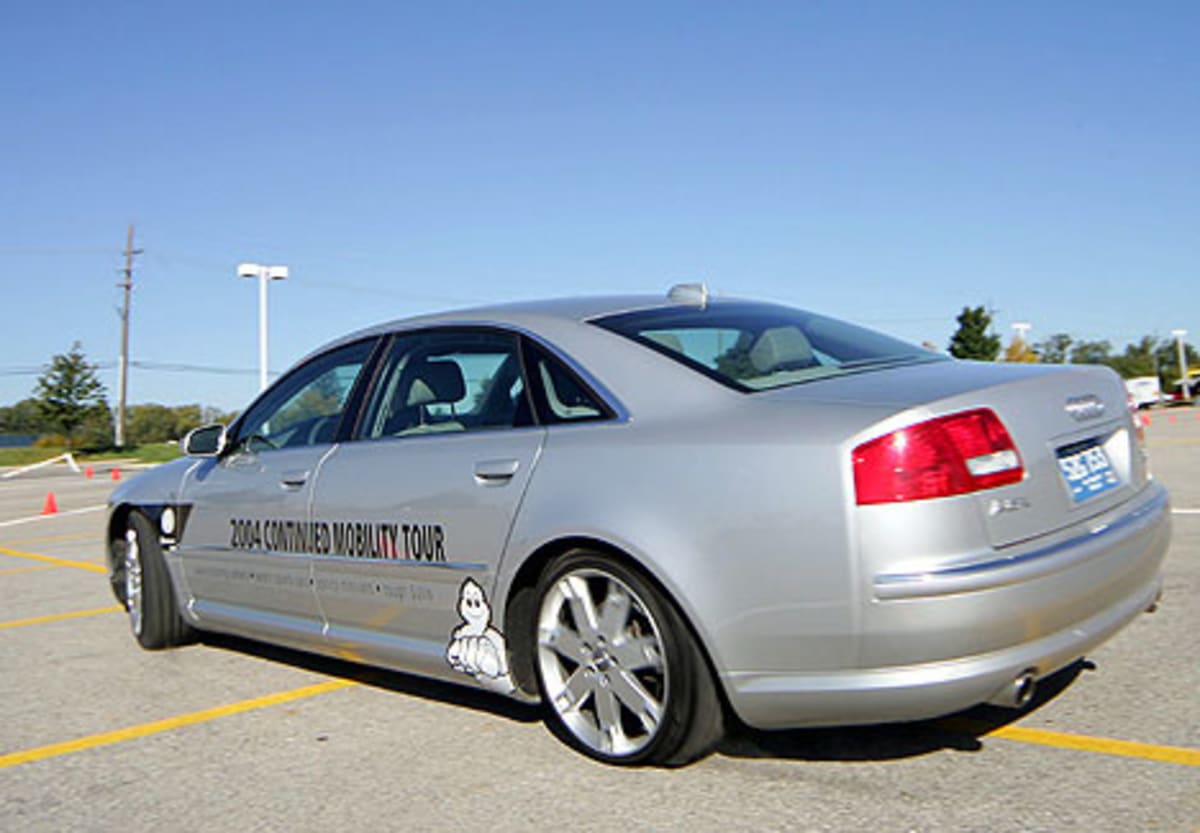
More on tires can be found at www.michelin.com


